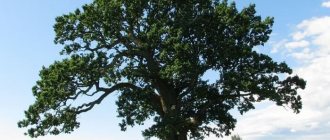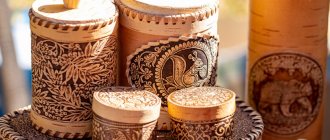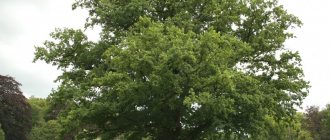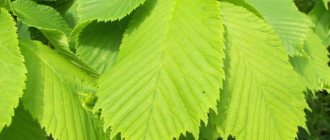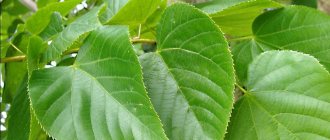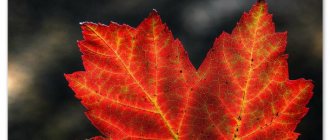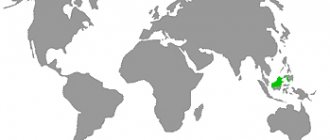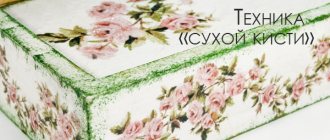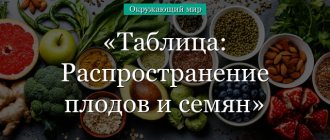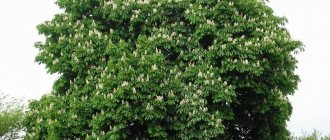- Reports and messages
- Plants
- Spruce
Spruce belongs to the pine family.
This is an evergreen tree, a symbol of the New Year. Spruce can grow up to fifty meters in height and live up to three hundred years. In the USA there is a spruce tree that is eight hundred and fifty-two years old. There are about forty-five varieties of tall spruce trees. Of these, the following can be noted: Eastern European or ordinary, Siberian, Oriental, Korean, Ayak, Tien Shan, Glen spruce, Canadian, red, Serbian, blue.
Low spruces are called dwarf. Dwarf spruces have found wide application in the field of landscape design and are often used in home and interior decoration. There are the following types of dwarf spruce trees: Push spruce, Nidiformis spruce, Nana spruce, Bialobok spruce.
The distribution area of spruce is very large. The common spruce has the largest distribution area: Western Europe, Russia and the Urals. Siberian and Ayan spruce grows in Siberia, and eastern spruce grows in the Caucasus. There are varieties of spruce that grow in certain climates: for example, only on the Kuril Islands, southern Sakhalin and the island of Hokkaido.
Spruce reproduces with the help of heterosexual cones. When the seeds ripen, the cone falls to the ground and is carried away by the wind, sometimes very far. Spruce begins to reproduce after fifteen years of growth.
Spruce is not only an ornamental plant, it is widely used in various fields. Spruce bark, wood, pine needles and cones are used.
Spruce wood is very “musical” and has the ability to “hold” sound. The speed of sound propagation in spruce is fifteen times greater than the propagation of sound in air. Previously, in Rus' they made harps from spruce, but now they make soundboards for cellos, violins and guitars. To do this, choose a tree without curls and knots. Since houses were previously built from spruce, restorers are looking for pieces of spruce in the ruins of old houses that will be used in restoration: it is believed that such spruce has acquired even greater musicality with age. They tried to replace the spruce with another tree, but they did not find a second such “musical” tree.
The second major area of spruce is wood chemical production. Cardboard, paper, cellulose are made from it, and turpentine is obtained. Tannins are obtained from the bark, which are used in industry for tanning leather and in medicine.
Essential fractions and volatile oils are isolated from the needles, which are used in the perfume industry and medicine.
Spruce is widely used in ornamental gardening and park construction. Spruce trees are often planted along roads for protection from the wind. Nuts from the cones serve as food for birds and animals.
In many countries, spruce is decorated for the New Year. In America, the Christmas tree is decorated long before Christmas. They decorate mainly with edible decorations: tangerines, sweets and red and white candies in honor of Jesus Christ.
In Germany, Christmas trees glow and shimmer. They are decorated with balls, garlands, and Santa Claus figurines.
In Finland, trees are protected, so they prefer to decorate artificial Christmas trees with homemade decorations.
In many countries, for the New Year they decorate not a Christmas tree, but other trees: in China - a tangerine or orange tree, in Mexico - a palm tree, in Africa - a baobab tree. Often in Asian countries they dress up not a tree, but a rake in order to “rakes” more wealth in the new year.
Report No. 2
Spruce is an evergreen slender tree from the pine family, which is easily recognized by its cone-shaped shape and oblong fruits - cones. At maximum dimensions it exceeds a height of 40 meters. Spruce grows very slowly for the first ten years, then it begins to grow more actively and slows down again after the age of 100 years. It is one of the longest-living plants, some species live over 850 years! Young trees have gray, smooth bark. Old plants have rough, peeling bark. The needles are up to 3 cm long; the needles themselves are dark green.
In total, the number of varieties of spruce trees is more than 50 species. Spruce is widespread throughout the northern hemisphere, found in Northern Europe and America, as well as in many Russian cities.
For the growth of the northern tree, certain conditions are needed, such as shade, moisture and moderate temperature. Due to the fact that these conifers are not sun-loving, young Christmas trees often get burned. Moisture and a temperate climate are of particular importance, since spruce trees do not tolerate dry seasons and high temperatures, which affects their growth.
These conifers reproduce by seeds, which germinate easily. The cones open in early December, the seeds fall out and are carried by the wind over vast distances. In spring, the seed sprouts and the life of a new sprout begins.
Spruce plantings can most often be seen in medical and recreational places, since the needles contain special substances that purify the air.
Many different household items are made from these plants. The softwood is used in the creation of paper, artificial silk and gunpowder.
The cones are not useless either. The fruits of spruce trees are often used in folk medicine; they contain a considerable amount of essential oils and minerals.
Since childhood, everyone has associated spruces with the New Year. For many centuries it was a symbol of a new period in life. In the old days, because of its evergreen color, spruce was compared to youth and immortality.
The most common and familiar plant to us, it turns out, has a huge number of interesting and useful qualities.
2nd, 3rd, 5th, 7th grade biology
Project on the theme “Protect the spruce”
Municipal educational institution "Gymnasium No. 24"
Project on the theme “Protect the spruce”
Completed by students of grade 6B
MBOU "Gymnasium No. 24"
2015
Introduction:
For a long time, the New Year has been a favorite holiday, and in the minds of many people, spruce is the “New Year’s tree.” This ancient tradition today and now threatens our coniferous forests and our common future! Everyone knows that the New Year is the most joyful, beautiful, magical holiday. Since 1700, by order of Peter I, we celebrate it on January 1 with festive festivities, processions, and round dances. A mandatory attribute of this holiday is a Christmas tree (slide No. 1-2).
On the eve of the New Year, millions of Christmas tree markets open all over the world. It's hard to imagine how many spruces and pines are cut down every year. No one dares to name a figure or estimate the volume of trade, because in every city or town, irreparable damage to nature is caused for the sake of a few days of holidays. It’s sad to realize, but of all the trees cut down... almost a third remains unsold and is thrown into a landfill. But these were young 15-20 year old trees that could turn into mighty forest giants. It is estimated that residents of 2,000 apartments, who replaced live Christmas trees with synthetic ones or compositions made from natural material, saved a hectare from merciless deforestation.
This attitude towards the forest resources of our country and region seems unacceptable to us, which is why the idea of developing and implementing the “Protect the Spruce” project arose (slide No. 3-5)
Objective of the project:
• To attract the attention of students of gymnasium No. 24 and their parents to the problem of preserving spruce during the New Year holidays and to form an active position among students on environmental protection issues.
Tasks:
- Study material about the importance of spruce and other conifers for humans and the environment.
- Conduct a survey among students of gymnasium No. 24 and their parents.
- Determine ways to preserve fir trees and replace them with other attributes.
- Creating a presentation “Protect the spruce.”
- Conversations with gymnasium students about the need to preserve the Christmas tree and ways to replace it, showing a presentation.
- Holding a competition to make a Christmas tree with your own hands from scrap materials.
7. Holding a drawing competition “Let’s Protect the Spruce”
Methods used:
- Working with information sources.
- Questioning.
- Analysis and synthesis of information.
- Campaign for the protection of nature
II . Features of Norway spruce and other conifers.
The first stage of our work was to find out the characteristics of spruce, what significance spruce has for humans, animals and other plants. We read a lot of literature and learned a lot of new things. Norway spruce is a genus of coniferous evergreen trees of the pine family. There are 45 species in the world. There are 10 species of spruce in Russia. Norway spruce is one of the main forest-forming species. This is a slender tree 25-30 m tall. Completes its growth by 150 years. Lives up to 300 years. The crown of the spruce is wide-conical with horizontal branches and penetrating lateral branches, with a pointed apex. The needles are dark green, hard, and live for 6-12 years. Every autumn, at least 1/7 of the needles die off, which almost does not change the appearance of the tree. Regularly changing its evergreen outfit, the tree does not lose its charm. Spruce is frost-resistant, shade-tolerant, and demanding of soil and air moisture. Propagated by seeds. Light brown cones up to 6-12 cm greatly decorate the tree during the fruiting period. In January, February, March, the seeds fall out of the cones and they fall off. By the age of 10 years, the spruce reaches 1-2 m in height. Spruce is a tree that is exceptional in its properties. One of these properties is musicality. Since ancient times, musical instruments, including stringed ones, have been made from spruce. Novgorod harps of medieval Rus' were most often made from spruce. The tops of violins, cellos, and guitars have long been made from resonant spruce, which provides the instruments with beautiful sound. It's like she holds the sound inside herself. The requirements for musical wood are special: it must be without a hitch in the literal and figurative sense - free from knots, curls, heels and other defects. The annual layers should be the same width, and in a radial section straight and parallel.
Coniferous trees do not grow as easily as deciduous trees. If a plot of land is vacated somewhere, first of all it is filled with deciduous trees (birch, aspen, then others). Coniferous trees do not have root growth. If emergency trees are cut down in the city, and if the tree was alive, it produces powerful root growth (for example, poplar) and quickly increases its leaf mass. This does not happen with conifers. In evolutionary terms, conifers are more ancient than deciduous trees. In the initially humid climate of the Earth, tree ferns developed. When the climate changed, coniferous trees took over, and only then deciduous ones. Conifers are less adapted, it is more difficult for them to compete with deciduous plants.
If you cut off the top of a coniferous tree (those pine or spruce trees that are sold before the New Year at bazaars), the growth point is thereby cut off. If you leave no branches at all, the tree dies. But you can do it differently. If we cut off the lower branches of a coniferous tree for a New Year's bouquet, we do not cause significant harm to the tree. Remember pine forests - the trunks in their lower part are devoid of branches, because pine is a light-loving plant. The lower branches have a certain lifespan, and perhaps we shortened it somewhat, but these branches would not develop further and would not turn into a separate trunk (as in deciduous plants).
Conifers, which are planted for sale on the New Year, occupy huge areas. This forest area performs important functions:
- water protection
- soil conservation
- dust retention
And when these tracts are cut down, damage is caused to the entire nature. It is sometimes said that “waste” is cut down for these purposes, but in practice this is not the case. It is proposed to cut down trees that compact the forest area and prevent other trees from developing. But in practice, the person selling Christmas trees will cut down the most beautiful and lush trees. It turns out that those trees that would have died during natural selection remain and produce weak or non-viable offspring. Global degeneration is underway. This is very important, since Scots pine is a forest-forming species in our area. We plant fir, cypress and other exotic plants, but they will never be able to perform a forest-forming function.
In the pre-New Year fever, felled trees are forced upon us. They are sold everywhere - near metro exits, at bazaars, at crossroads.
III .
The importance of spruce and other conifers for humans and the environment
- The meaning of spruce for all living things.
Spruce, together with other green plants, form organic substances, absorbing carbon dioxide from the air, and replenish the supply of oxygen. Spruce trees delay snow melting. All the snow water in the forest manages to penetrate the soil. The green wall of the forest traps hot, dry winds called hot winds.
Releases phytoncides. Phytoncides are volatile substances released by a plant. They kill microorganisms that usually fill the air. That’s why it’s so easy to breathe in the forest. A spruce forest releases 5 kg of phytoncides per hectare per day. Over the millennia, dead plants also formed the soil. Spruce plays a huge role in the lives of many insects, animals, and birds. Squirrels, crossbills and other animals feed on spruce needles and cones. Serves as housing for animals.
2. The meaning of spruce in human life:
In addition to its beauty, spruce is a very valuable tree. Spruce produces soft, light and resinous wood; it serves as the main raw material for paper production. Spruce wood is also irreplaceable in the manufacture of furniture and building materials. Spruce wood is also used to make musical instruments - violins and cellos. The violins of the most famous makers, Stradivarius and Amati, were made of spruce wood. Turpentine and rosin, wood vinegar, tar, methyl alcohol, and essential oils are obtained from spruce resin flowing from sapped trees. Spruce is also used in park construction, ornamental gardening, and also for creating windbreaks. The seeds serve as food for birds and animals. The bark is used as a leather tanning agent. The needles are used to prepare pine-vitamin flour for feeding livestock. During the work, we learned very interesting facts. The 19th century French scientist Avar calculated the speed of sound in spruce wood. It turns out that the speed of sound in air is 15-16 times less than in spruce wood. In ancient times, people considered spruce to be the patroness of animals, birds and plants. The good spirit of the spruce tree protected a person from all kinds of adversity. Spruce was revered as a symbol of eternal life and youth. In ancient times, in villages, when laying the foundation of a house, there was such a custom. A small Christmas tree was brought from the forest and planted in the front corner of the log house. The Christmas tree was considered a kind of amulet. Spruce trunks were used to build sea and river vessels, as this wood was considered strong. In the old days, spinning wheels, oars and shovels were also made from spruce. By chemically treating pine and spruce wood, the finest fibers, similar to silk threads, are obtained. And paper is made from spruce wood. Rosin, soap, sealing wax, alcohol, celluloid, plastics, photographic film, film strip, car varnishes - this is not a complete list of what is obtained from the wood of coniferous plants. From sawdust you can get food products: sugar glucose and vanillin. Spruce needles contain one of the most important vitamins for humans - vitamin C. From pine needles and its resin, fragrant pine oil, used in medicine, and turpentine are obtained. This tree was especially revered by sailors , since the infusion from this tree saved them from such a terrible disease as scurvy.
Conclusion: spruce plays an important role in nature and human life, so it must be protected.
V. _ Survey results
(slide number 6).
When working on the project, the attitude of students and their parents to the problem of preserving coniferous plants during the New Year holidays was studied. A survey was conducted among school students and their parents. 142 people took part in the survey. 2 questions were asked:
Survey results
| Question: | Results percentages |
| 1. What will you have for the New Year: | |
| 1) natural Christmas tree; | 56 |
| 2) artificial Christmas tree | 24 |
| 3) bouquet of coniferous branches | 7 |
| 4) nothing | 13 |
| 2. If you don’t have a Christmas tree, what would you choose as a replacement: | |
| 1) artificial Christmas tree | 28 |
| 2) a bouquet of coniferous branches; | 42 |
| 3) I don’t know yet. | 30 |
The results showed that not all people use artificial and other attributes of the New Year holiday instead of live spruce. 56% will buy a natural Christmas tree.
37% of respondents are in favor of an artificial tree or not putting anything up for the New Year. The reasons are natural: the absence of garbage in the form of dry needles in the house, as well as the reluctance to destroy living trees, that Christmas trees must be protected and not cut down for the New Year. Conclusion: the results show that it is necessary to work with students of the gymnasium and their parents to protect spruce
.
- Methods for preserving fir trees and replacing them with other attributes.
- Buy really live Christmas trees grown in tubs, or buy Christmas trees from forestry enterprises, where they are grown specifically for sale. At the end of the New Year holidays, you can return the Christmas tree or keep it for yourself - for example, plant it in your own yard. (slide number 7).
- It's probably time to remember the traditions of our ancestors. For example, in Rus' no trees were decorated for the holidays. Instead, cherry blossoms were grown in a tub and their branches were decorated with candles.
- Decorate the fir tree near the house with toys.
- You can buy a beautiful artificial Christmas tree. (
Slide No. 8 - 9
)
A few decades ago, artificial spruce trees looked flat and standard, they were made of cheap plastic, and it was a shame to put such a tree in the house, and it was also uncomfortable - no matter how you decorated it, it was still clear that the spruce was artificial, there was no solemnity inherent in the holiday , there was no such tree in the pale appearance. But now everything has changed. Today's artificial trees have become a real work of art - made from hypoallergenic high-quality materials, these trees become a real decoration for the holiday, and at first glance you will never distinguish such a tree from the real one. You need to choose such a New Year's symbol based solely on your own taste. Artificial Christmas trees come in a variety of heights - from very small ones, which office workers install on their desks before the New Year, to five-meter giants, designed to decorate large rooms. Overall, the height range is great. An artificial spruce is usually chosen in the same way as a real one - according to its “growth” and degree of fluffiness. In addition, for some trees you don’t need to buy a New Year’s garland, because this beauty already shimmers with a kaleidoscope of New Year’s lights with a gentle, slightly diffused glow. The same goes for the famous pine smell, which is always associated with the New Year holidays. So, many artificial spruce trees today are treated with natural flavors, which allow you to feel the New Year's aroma emanating from the tree. In addition, such a tree does not fall off, unlike a natural one, there cannot be an allergy to it (and some people are allergic to pine needles), it is absolutely safe for you and your children, convenient and environmentally friendly. An artificial Christmas tree will serve for many years, from holiday to holiday, decorating your home. Such trees have a long service life, reaching up to ten years. And during this time you will save ten living Christmas trees.
But an artificial Christmas tree also has its downsides. The tree is made of plastic. And plastic releases chemicals, which already harms the atmosphere. And 7 years pass and people buy themselves a new Christmas tree, the old one goes to the trash heap. And no matter what method you choose to eliminate and erase this very tree from the face of the Earth, harm cannot be avoided. Either recycle it - then the atmosphere will suffer, or not recycle it - then the plastic will decompose for hundreds of years.
- You can use compositions from branches, ikebana. Experiment and let the green beauties continue to grow. After all, to help the Forest, not much is required from us. (Slide number 10).
- Making a Christmas tree from alternative materials (slide No. 11-16).
You can simply come up with and create a craft or a Christmas tree with your own hands, under one single condition: do not use live trees, branches and spruce branches of coniferous trees! It will be healthier for everyone to use aroma lamps! Both for you and for the environment. And it creates a romantic mood. In this way, you will save a living Christmas tree and, by your example, demonstrate to other people the limitless possibilities of your imagination and skill. And an alternative solution to save the tree for the planet will appear in your collection of achievements!
- Finally, you can take any indoor tree as a Christmas tree - lemon, ficus or Dieffenbachia, and if you decorate a prickly cactus with Christmas tree tinsel, then the “Christmas tree surrogate” will turn out to be quite reliable due to its “prickliness” (slide No. 17).
In Europe, one of the symbols of Christmas is the poinsettia, which belongs to the Euphorbiaceae family, which is called the “Christmas star.” Its stipules, which are most often red, resemble a star in shape.
- Christmas trees can be made from food and sweets. (slide number 18).
VI . How can you prevent illegal cutting of spruce.
Excessive demand before the New Year contributes to the development of illegal cutting of spruce trees. It is necessary to regulate the cutting down of trees for the new year, for this it is necessary to carry out the following activities:
- Stimulating the production and sales of artificial trees - artificial Christmas trees are currently offered in a very realistic look;
- Organization of Christmas tree forestry farms, in which trees are grown specifically for the New Year (Christmas) holidays;
- Restrictions or a complete ban on visiting forests during the New Year and Christmas holidays and the imposition of serious fines for violations;
- Stimulating sales of live spruce and fir trees (in special containers - pots, tubs) with the organization of their subsequent delivery to forestry enterprises for planting trees in forests;
- A complete or partial ban on the installation of living trees on streets and squares and subsidizing the installation of large artificial trees, as well as New Year’s compositions.
- Events held in defense of spruce among gymnasium students.
To attract students' attention to the problem of preserving coniferous trees during the New Year holidays, the following events were held:
- Conversations with school students about the need to preserve the Christmas tree and ways to replace it in grades 4-7.
- A competition was held to make a Christmas tree with your own hands from scrap materials.
- A drawing competition “Let's Protect the Spruce” was held.
VIII . Conclusion:
Thanks to the work carried out, we found out that spruce plays a very important role in nature and human life, so it must be treated with care. There are different ways to replace a natural spruce: using an artificial tree, compositions from branches, ikebana, decorating live trees near the house, in the country, live trees grown in tubs, making your own Christmas trees from alternative materials, from sweets and other food products, decorating a houseplant , may the green beauties continue to grow. After all, to help the forest, not much is required from us.
The survey showed that not all people put up live spruce trees. We can conclude that the fate of the forest is not indifferent to them.
We call:
Let spruce and pine trees GROW on our Earth! Let's give our forests a chance! Let's leave the little Christmas tree to live in the forest.
I X. Sources and literature used.
Internet sites:
- https://www.zoo.kharkov.ua.html
- https://shkolazhizni.ru/about/
- https://1september.ru/
- https://www.zfront.org/otchet-ob-aktsii-spasi-yolku/
Literature:
1. Bagrova L.A. I explore the world: Children's encyclopedia: Plants / L.A. Bagrova; Under the general editorship of G. Hinn. – M.: TKO “AST”, 1996. – S.
8- 98.
2 Zakharov V.B. Biology 7th grade. Diversity of living organisms: a textbook for educational institutions / V.B. Zakharov, N.I. Sonin. – M.: Bustard, 2002
Popular message topics
- Mammoths
are extinct elephantine mammals. They weighed on average eleven tons, and reached a height of five meters. Undoubtedly, they were very similar to modern elephants, but they still had differences. - Thomas More
Sir Thomas More was Lord Chancellor of England, lawyer, philosopher. He went down in history as the author of the most famous utopia on government structure. Sir Thomas was born into the family of a London judge on February 7, 1478. - Works of Belyaev
On March 4, 1884, Russian writer Alexander Romanovich Belyaev was born in the city of Smolensk. The family of the Orthodox priest Roman Petrovich and Natalya Fedorovna already had two children: Nina and Vasily.
Contraindications for use
Inhalation of the respiratory tract with pine essential oils is very beneficial for humans . However, there are situations when such an aroma, as well as the use of preparations based on spruce components, can cause serious health problems.
- Spruce components, and especially their alcohol infusions and very concentrated extracts, are not recommended for use:
- during pregnancy and lactation (alcohol-containing drugs harm the fetus, the presence of large amounts of vitamin C and tannins can cause miscarriage, and mother’s milk can become bitter and smell like essential oils);
- children under 12 years of age (a very strong effect on the body of the active substances contained in pine needles can be harmful);
- with liver and kidney disease (difficult to remove from the body);
- for stroke and heart attack (the presence of a large amount of biologically active substances contributes to an excessive increase in blood pressure);
- in case of individual allergic reactions (risk of anaphylactic shock).
Familiar to everyone since childhood, spruce is not only a beautiful tree, but also a medicinal plant that can cure many diseases and significantly improve a person’s mood. Knowing its healing properties and simple folk recipes, you can greatly improve the quality of life for yourself and your loved ones.
Habitat
Norway spruce is widespread in North America, northeastern Europe, the Alps, Carpathians, and the Balkan Peninsula. In the CIS countries it grows in the northern and middle zones, coinciding in the north with the border of forests and descending to the black earth zone.
The plant prefers moist, fertile loamy and sandy loam soils. As for its relationship to light, common spruce is shade-tolerant. It forms pure forests and is also part of mixed forests. Grows well in combination with common blueberry (spruce-blueberry), wood sorrel (spruce-sorrel).
Dosage forms
Decoction of pine needles
20-25 gr. pour 250 ml of crushed raw materials. water. Bring to a boil and simmer over low heat for 20-30 minutes. Remove from heat, cover with a lid, insulate and leave for 2-3 hours. Strain, squeeze out the raw materials. Using boiled water, bring the resulting broth to its original volume.
Take 0.25-0.5 tbsp. 3 times a day after meals. You can add a slice of lemon for taste.
Decoction of cones (externally)
Prepare a decoction (see recipe above) at the rate of 40 g. crushed raw materials per 200 ml. water. Boil for half an hour, leave for 15 minutes. Strain through three layers of gauze.
Store in a cool, dark place for no more than three days.
Wood qualities
Among coniferous species, spruce wood is characterized by low resin content and has a light shade with a golden tint, which it retains throughout its entire service life. Due to the fact that the tree grows strictly straight (spruce trees with a curved trunk are rare - this is a sign of disease), the color of the tree inside is uniform from the core to the sapwood.
Spruce has quite a lot of knots and resinous ducts on the cross section, and pronounced growth rings. The parameters of lumber at an optimal humidity of 12% are as follows:
- Tensile strength - 90 MPa;
- Bending – 75 MPa;
- Shear – 9 MPa;
- Density 470 kg/cm3;
- Brinell hardness – 3.2 kgf/mm2;
- Elastic modulus – 11000 MPa;
- Thermal conductivity – 0.14 W/m ̊C;
- Calorific value – 16.9 MJ/kg.
Lumber must be treated with antiseptic compounds, providing protection against rotting, since the density of spruce is low. The material is well processed, milled, sawn, glued, painted, and reliably holds nails and screws.
The density of the tree depends on the area where it grows. Therefore, this indicator may vary. Lumber is sorted, and winter harvested wood is selected for construction. In winter, the tree is not exposed to rot, fungus and insects, and, therefore, structures made from such wood last longer.
Medicinal and beneficial properties of common spruce
The beneficial and medicinal properties of common spruce are as follows:
- diaphoretic,
- expectorant
- anti-inflammatory,
- antispasmodic,
- diuretic,
- choleretic,
- disinfectant,
- antimicrobial,
- bactericidal,
- wound healing,
- painkiller,
- desensitizing,
- vitamin,
- antiscorbutic,
- restorative.
Traditional medicine recipes
Respiratory diseases
Chop fresh young shoots of common spruce. Place the raw materials in layers in a three-liter glass jar, sprinkling each layer with sugar. In total you will need one and a half kilograms of sugar.
Cover the container with gauze folded in several layers and tie it with twine. Infuse on a windowsill in the sun for 10 days, remembering to stir periodically. Strain, squeeze out the raw materials.
Take 2 tbsp. in the morning.
Used for asthma, bronchitis, pneumonia, tuberculosis.
Ointment
Combine equal amounts of common spruce resin, bee honey, wax, and vegetable oil (preferably olive oil). The mixture is heated, stirring, over low heat until smooth. Cool.
The ointment is applied to the damaged surface in the morning and kept until the evening; lotions are made at night, using a decoction, if any.
Applications of spruce wood
Spruce is used very widely in various industries due to its unique properties:
- The high flexibility of wood allows it to be used to make bent furniture and other things that require a certain forming;
- In construction, spruce is used for the construction of log houses, finishing ceilings, stairs, and decorating the house;
- Spruce is used to produce veneer, fiberboard, chipboard, laminated timber and high-quality plywood;
- Musical instruments are made from spruce (the soundboards of guitars, violins, cellos, etc.), the wood is considered resonant and transmits sound well;
- Spruce is widely used in the chemical industry for the production of rosin, alcohol, paper, cardboard, turpentine, etc.
Types of fir trees
The most common species in our country is the common spruce.
or
European (Picea abies, Picea excelsa ) . A tree of the first size with a trunk diameter of up to 1 m. Norway spruce has a lot of different decorative forms, among which low-growing varieties, for example 'Pygmaea ', ' Procumbens ', ' Nidiformis ', are especially popular among landscape designers;
with golden needles –
' Aurea ';
natural form of
' Virgata '
with a graceful crown formed by long, hanging, lightly branched lateral branches.
Norway spruce
Norway spruce 'Pygmaea'
Norway spruce 'Procumbens'
Norway spruce 'Nidiformis'
Norway spruce 'Aurea'
Norway spruce 'Virgata'
_________________________________________________________________
prickly spruce
( Picea pungens ) , are widely used in culture . This spruce received its specific name for its really prickly and long needles. It is this, as the most sustainable, that is used in landscaping our cities. Its decorative forms with silvery needles and a dense cone-shaped crown are especially good - ' Glauca ', ' Hoopsii '.
Spruce 'Glauca'
Prickly spruce 'Hoopsii'
_________________________________________________________________
Gray spruce,
or
Canadian ( Picea glauca ) , also used in green building. This tall, slender tree with bluish-green needles is considered one of the most winter-hardy species. A very spectacular low-growing decorative form of this species - ' Conica '
is a top seller at garden markets every year.
Canadian spruce 'Conica'
_________________________________________________________________
Schrenk's spruce
, or
Tien Shan ( Picea schrenkiana ) , is a powerful tree up to 45 m high with a narrow cone-shaped, low-slung crown and beautiful pale bluish needles.
It grows in the Dzungarian Alatau and almost throughout the Tien Shan; it is undemanding to soil. It has high-quality wood, but its main value is the mountain-reinforcement, soil-protection and water-protection functions that it performs when growing in mountainous areas. Schrenk's spruce
_________________________________________________________________
Serbian spruce,
or
Balkan
(
Picea omorika
), grows in the mountains of the Balkan Peninsula, but, despite its southern origin, feels great in central Russia. This is a tree up to 45–55 m high with a very impressive narrow-conical crown that is dense until old age. With its unusual appearance and beautiful two-color needles (dark green above, whitish below), it stands out among other spruce trees.
Many customers answer the question “What kind of spruce should you plant on your site?” They answer: “Serbian spruce.” This speaks to the undeniable decorative qualities of fir-like spruce trees, which look very attractive due to their two-color needles. From a distance they seem to be dusted with frost. Western European nurseries have been growing them as Christmas trees for a long time.
Serbian spruce
_________________________________________________________________
Ayan spruce
(Picea ajanensis ) - a tree up to 50 m high - is found in the Far East, Kamchatka, Sakhalin and the Southern Kuril Islands.
Frost-resistant. It also has spectacular two-color needles, but, unlike the previous species, it has a wide cone-shaped crown. It is one of the forest-forming species in the Okhotsk taiga. Spruce ayanskaya
_________________________________________________________________
Brewer spruce
( Picea breweriana ) is native to North America and is frost-hardy.
A tree 10–15 (35) m high with a crown diameter of up to 5–6 m. It is memorable for its wide pyramidal crown with weeping branches of the second order, hanging down to 1–3 m from the main branches. Looks advantageous in a solitaire planting. Spruce Brevera
_________________________________________________________________
Eastern spruce
, or
Caucasian ( Picea orientalis ) , grows in the mountains of the Western Caucasus along with Caucasian fir.
Tree up to 40 m high with a conical crown. Its beautiful spindle-cylindrical unopened buds resemble cigars. Eastern spruce is original in decorative terms due to its short needles (up to 8 mm long) and thin graceful branches. But, unfortunately, this species is quite thermophilic and in the Moscow region it grows no higher than the snow cover. Eastern spruce
Eastern spruce cones
Healing properties of spruce
In folk medicine, the tops of young shoots with buds are used, collected during the flowering period - in May. Immature cones and resin are also valued, which are preferably collected from June to September.
Types and varieties of fir trees in landscape design
Norway spruce 'Compacta'
Most often, gardens and parks are decorated with prickly spruce, Norway spruce and Serbian spruce; somewhat less often you can see Canadian, black and Engelmann spruce.
